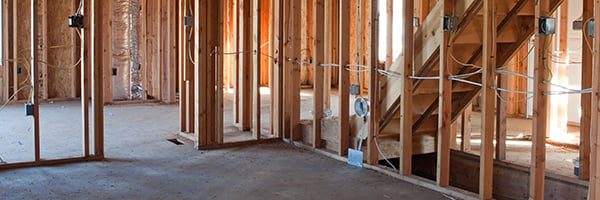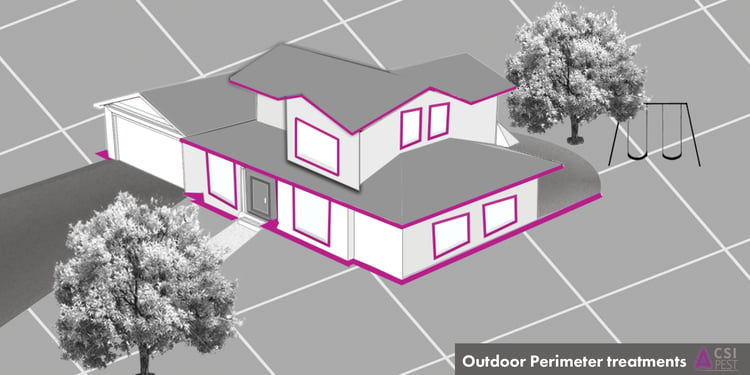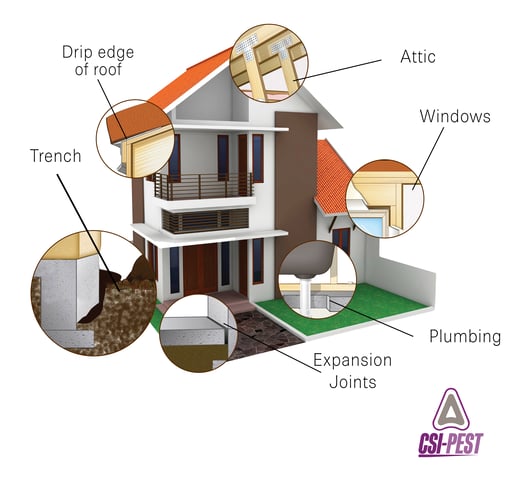A common question received over my career from PMPs and customers alike is: “Why did the treatment not control my pests?”
The answer is rarely a simple one, below are a few circumstances you might run into as a pest management professional, along with some useful tips to ensure you’re developing the best termite treatment plan for your customers.
1. Applying less than the labeled rate or volume of product.
Note that performance of a product almost always comes down to application technique; if the product is applied according to the label directions and at a rate and methods prescribed there, failures are rare, but they do happen. When failures do occur, it is often because products are applied at less than the label rate or less than the recommended volume.
Termiticides are expensive, and modern termiticides are extremely effective, leading some PMPs to the conclusion that “less is more” – lowering the total amount of termiticide they use on a structure. Rates and volumes are heavily researched, so labels can be as accurate as possible. These rates are for maximum efficacy and using less termiticide means less active ingredient is available for termites to encounter in the soil.
For most insecticides there is a dose, or total amount of active ingredient, a pest must be exposed to in order to be effective. If this level is not present in the soil termite activity continues, more damage occurs, and call backs happen.
2. Product not being delivered to the area where termites are accessing
Construction elements, foundation cracks, cold joints, hidden plumbing penetrations, additions, unconventionally built homes and other hidden construction features where termites can hide from inspection or treatment efforts are another culprit of treatment failures.
In these cases, PMPs must seek out these unusual features. This is easily said and often very difficult to do.
Once the termites and the construction elements causing the difficulty are identified, the next step is to plan a method to treat them. This often means unconventional or unusual treatment methods must be used. If you need to do something unusual or unconventional, don’t hesitate to reach out to the manufacturer of the termiticide you are using. We are here to help in difficult times.


Once the termites and the construction elements causing the difficulty are identified, the next step is to plan a method to treat them. This often means unconventional or unusual treatment methods must be used. Innovative products might be needed in these tough to manage pest situations. Taurus Dry is a termite treatment product formulated into a dry dust. This is especially useful managing termite infestations in areas where traditional liquid applications are difficult to deploy. Taurus Dry is applied using the Precision Delivery System, a hand-held microduster, designed to deliver small, precise amounts of dry flowable formulations into voids, cracks, and crevices. It allows PMPs to work quickly, with ease and precision in their dry flowable applications.
If you need to do something unusual or unconventional, don’t hesitate to reach out to the manufacturer of the termiticide you are using. We are here to help in difficult times.
Overall, pesticide applications must follow label directions and rates. Application techniques are important as well, but in these cases, understanding construction variation is a useful set of knowledge.
3. Construction types & conducive conditions can impact your treatment technique
As mentioned above, construction type and conducive conditions in each structure you treat will affect how effective/ineffective a termiticide application can be. If you make an application and conducive conditions are not remedied by the property owner, treatments can be less effective. Another important consideration is the species of termite you’re facing. It is a very good idea to become familiar with basic, conventional building construction and the types of construction used in your area of the country.
You don’t need to become a contractor by any means, just getting an understanding of what different types of slabs look like as well as the different termite entry points they each can be inherently helpful in devising your treatment plan(s).
A simple Google image search of key words like “supported slab” or “crawl space construction” for example, will yield endless drawings and pictures you can use to see what lies beneath all that stucco, brick veneer, siding, and paint. Additionally, I like to visit and inspect structures in my area (where allowed) during the construction process.
It is remarkably helpful to see how plumbers, electricians, carpenters and other skilled tradesmen assemble structures into a whole.


1. Use Visual Aids
Using simple termite identification tools will prove helpful and make your job much easier. Make sure you have a good magnifying hand lens (or microscope), a light source and an easy to use identification key. There are a number of keys available from a variety of sources. Use the one that makes the most sense to you. If you are stumped by a particular specimen you have many resources you can utilize to get help. Contact your local extension service, your local university’s Entomology department, or there are even pest management facebook groups that specialize in pest management that are useful for insect identification help.
Clear, close up pictures are always helpful when making comparisons and many universities with entomology programs make them available either in publications or in the form of ID Guides for purchase. Many can also be found easily online with a simple google search.
As always, use visuals like pictures and drawings from reputable sources. If you’re using them for more than your own internal training be sure you are not infringing any copyrights. Using an image you found online on your website without permission can cost thousands of dollars in legal fees!
When training new technicians, incorporate hands-on training like digging trenches, drilling slabs, probing to find the top of the footer, seeing what concrete overpour looks like, and understanding the importance of personal protective equipment is also important. Helping new technicians understand the reasons termite treatments fail can help them avoid the mistakes.
2. Brush up on your math skills
Reviewing labels and understanding the importance of rates, volumes and inspection techniques on a regular basis are good ideas, but knowing how to calculate how much total volume of product, concentrate and flow rates you need to use are also incredibly important. On a regular basis, brush up on math skills – at least a couple of times per year. Be sure you are calculating these things correctly and accurately. Train your employees to know the right answer and not to “eyeball” the answer or “guess.” This again reduces mistakes and reduces your chance for legal action. Employing these tips and tricks and avoiding these mistakes can help make your company and your termite treatments more efficient, effective and profitable!

You don’t have to live in a log home to be susceptible to termite damage. There’s plenty of wood for termites to make meals out of in the average home, including concrete block homes.
Termites can enter your home in a number of ways; they can swarm from a neighboring building or tree, they can enter through cracks in your foundation or even follow underground utility and plumbing lines through your home’s foundation and slab.

CSI is committed to providing PMPs with innovative ways to combat pests, save time, save money and reduce call backs. CSI, Innovation you can apply. Make sure to subscribe to our YouTube channel and follow us on Facebook and Twitter!
